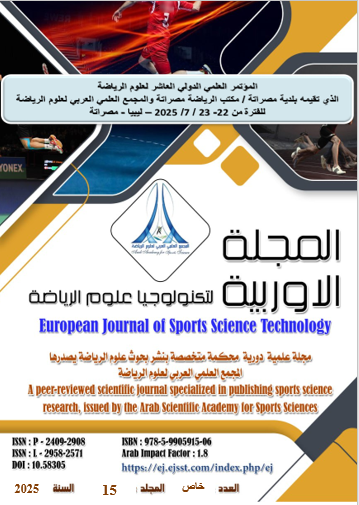The Contribution of Some Anthropometric Measurements to the Level of Motor Performance in Individual Skills Competition Tests for Students with Intellectual Disabilities in Basketball.
DOI:
https://doi.org/10.58305/ejsst.v15iSpecial%20issue.693Keywords:
Anthropometric measurements, motor performance, people with disabilities.Abstract
The research aims to determine the relationship between anthropometric measurements and the level of motor performance in individual skills competition tests for students with intellectual disabilities in basketball. In light of this objective, the researchers used the descriptive approach, as it was appropriate for the nature of the study. The research sample included (15) students with intellectual disabilities from the Center for the Development of Mental Abilities in Janzour. The results showed a strong direct relationship between some anthropometric measurements (body height, upper arm length, forearm length, shoulder length, thigh length, and leg length) and improved achievement in basketball skills. There was a negative and statistically insignificant effect of anthropometric measurements (upper arm length, knee diameter, and leg circumference) on the numerical level of basketball skill effectiveness. This means that their contribution to basketball skill effectiveness was negative and weak. The researchers recommend focusing on anthropometric measurements when selecting novice basketball players to save time and effort, as well as using these measurements to select higher-level players, who may achieve excellence and accomplishment.










